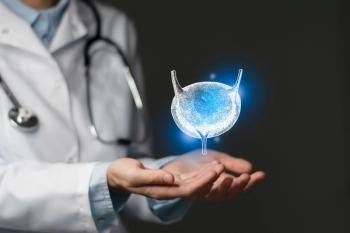
Bladder Cancer
Understanding bladder cancer.
No one expects to be diagnosed with bladder cancer, and most tell the Bladder Cancer Advocacy Network (BCAN) that they “had no idea you could get cancer in your bladder until my doctor told me that’s what I had!” Yet, each year, more than 80,000 Americans will receive that diagnosis.
WHAT IS BLADDER CANCER?
Bladder cancer is also known as urothelial carcinoma. Urothelial cells line our urinary tract, including the urethra, bladder, ureters and renal pelvis in the kidneys. These urothelial or transitional cells are in contact with urine. Bladder cancer happens when those cells in the bladder start to grow out of control.
WHAT ARE THE RISK FACTORS FOR BLADDER CANCER?
Research has shown that people who smoke or are exposed to occupational or environmental chemicals may have a higher risk of developing bladder cancer.
Whites are twice as likely to develop bladder cancer as are African Americans or Hispanics, and older age is another risk factor.
Health history also matters, with chronic bladder inflammation, such as urinary tract infections or kidney stones, as well as a personal or family history of bladder cancer, associated with risk of the disease.
You can learn more about the signs, symptoms and even risk factors for bladder cancer by visiting bcan.org/ bladder-cancer-signs-symptoms-risk-factors/.
WHAT ARE THE SYMPTOMS OF BLADDER CANCER?
Many people are unaware of the common signs of bladder cancer, such as blood in the urine, known as hematuria.
If you can actually see blood in your urine, this is called gross hematuria. When a physician runs a urinalysis test as part of a routine checkup, tiny amounts of blood — so tiny that you may not be able to see them — may be detected. This is microscopic hematuria.
Irritation when urinating, urgency (you have to go right away) and frequency (you have to empty your bladder a lot) are other warning signs. These signs may also be from other causes, such as a urinary tract infection, kidney stones or even aging.
HOW IS BLADDER CANCER DIAGNOSED AND STAGED?
A urologist is the medical specialist who makes a bladder cancer diagnosis. He or she uses a special instrument with a lens, called a cystoscope, that makes it possible to examine the lining of your bladder and the tube that carries urine out of your body (urethra).
If bladder cancer is diagnosed, the doctor needs to know the stage, or extent, of the disease to plan the best treatment. Staging is a careful attempt to find out whether the cancer has invaded the bladder wall or spread beyond that, and if so, to what parts of the body. Grade refers to how abnormal the cancer cells look and how many cells are multiplying. A higher grade means the cells are more uneven and are multiplying more. Knowing the grade can help your doctor predict how quickly the cancer will grow and spread.
Doctors usually describe and treat bladder cancer by how far it has grown into the bladder wall.
- NMIBC (non-muscle invasive bladder cancer) means that the cancer remains in the urothelial cells that line the bladder.
- MIBC (muscle-invasive bladder cancer) means that the cancer has grown into the deeper layers of the bladder muscle.
- If bladder cancer has spread to other parts of the body outside the urinary tract, it is advanced disease, or metastatic.
HOW IS BLADDER CANCER TREATED?
When bladder cancer is classified as NMIBC, surgery to remove the tumor is often the first step. A transurethral resection of the bladder tumor, or TURBT, uses a special instrument inserted through the urethra to remove the tumor. If the tumor is low risk and has not invaded the muscle wall of the bladder, it may not require more treatment. Unfortunately, bladder cancer has a high rate of recurrence so most of those who receive diagnoses must return to their urologist at regular intervals for surveillance using cystoscopy to see if the tumors return.
If the tumor cells appear aggressive under the microscope and the pathologist determines that the cancer is high grade, it is more likely to return or worsen. In these cases, further treatment to keep the cancer from returning or worsening is required. Most often, patients with high-grade NMIBC receive intravesical (inside the bladder) treatments. Bacillus Calmette-Guérin (BCG) is an early form of immunotherapy that uses a weakened form of bacteria. When these bacteria are put into the bladder, the immune system goes on alert. It responds by killing cancer cells on the bladder lining. Though BCG is very effective, it doesn’t work for all tumors. If BCG doesn’t work to treat your cancer, your doctor will talk to you about other options, such as Mitomycin C, an antibiotic that helps fight tumors.
When bladder cancer grows into the deeper layers of the bladder (MIBC), it is harder to treat. In some cases, a urologist may suggest surgery to remove your bladder. This is called radical cystectomy. Removing the bladder also involves removing lymph nodes around the organ. A pathologist checks the results. As part of the surgery, it will be necessary to create a new way for urine to leave your body, and this is called a urinary diversion.
Systemic chemotherapy refers to medicine that treats cancer throughout the whole body. Neoadjuvant chemotherapy is the term for chemotherapy people get before bladder removal surgery. Clinical trials have shown that cisplatin chemotherapy before bladder removal improves survival for people with MIBC because it helps kill bladder cancer cells that may be outside the bladder. Adjuvant chemotherapy is the term for chemotherapy people get after surgery.
Recently approved targeted therapies can block the growth and spread of cancer. They focus on stopping the cancer-driving activity caused by specific genetic mutations that are found in some bladder cancers.
Some patients may benefit from combined modality therapy — using surgery to remove the tumor, plus chemo- therapy and radiation to help kill the cancer while keep- ing the bladder intact. This option can be used for some patients who are ineligible for bladder removal surgery. Those with advanced or metastatic disease may benefit from chemotherapy and a variety of immunotherapies that can help the body fight off the cancer.
Though a bladder cancer diagnosis is scary, there are many talented researchers and clinicians working to improve the diagnosis and treatment of the disease. Clinical trials are an essential part of bladder cancer research. They may provide treatment alternatives to patients who have not had success with standard and approved therapies. To learn more and find a trial in your state, visit clinicaltrials.bcan.org.
WHAT ARE THE POTENTIAL SIDE EFFECTS OF TREATMENT?
Each of the treatments for bladder cancer has potential side effects. Some, such as systemic chemotherapy, are well known because they are similar across all cancers (hair loss, nausea, fatigue and infections). Others are related to surgeries (bleeding, catherization and continence issues). The newer immunotherapy treatments approved for bladder cancer can offer great promise to patients, but side effects such as diarrhea or nausea can be signs of life-threatening reactions when using these drugs. All these possibilities should be discussed with the medical team and considered carefully before treatment options are selected.
HOW DOES BLADDER CANCER AFFECT A PATIENT’S LIFE?
Bladder cancer has a high rate of recurrence, which implies the need for regular surveillance with cystoscopy over the course of a patient’s lifetime. What happens after treatment? The main goal is to be free of bladder cancer. But you must also manage the possible side effects of treatment. For some, the new normal after bladder removal surgery is adjusting to life with a urinary diversion. It’s normal to have lots of questions and feelings. Ask for help! Always feel good about talking with your health care team about any issues or questions you have. If your team can’t help, they can usually find someone who can.
WHERE IS HELP AVAILABLE?
To learn more, visit BCAN.org or seek a free print or electronic copy of BCAN’s Bladder Cancer Basics handbook or the new Tips for Caregivers by visiting bcan.org/handbook or call 301-215-9099.




